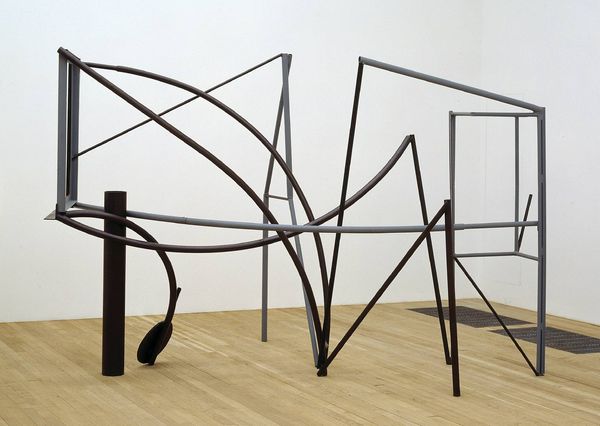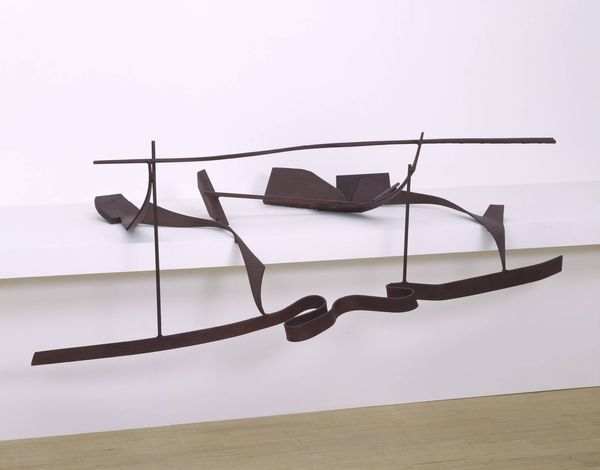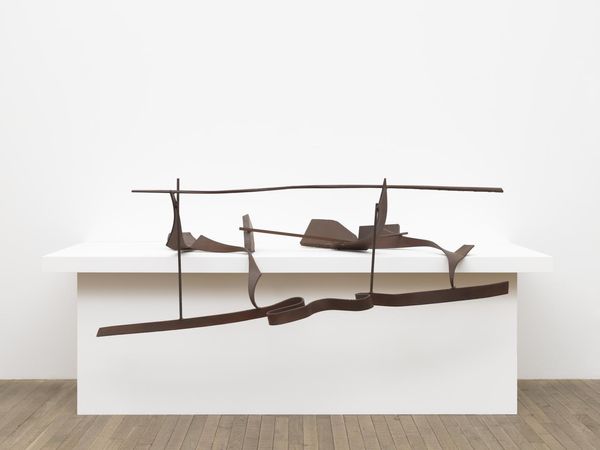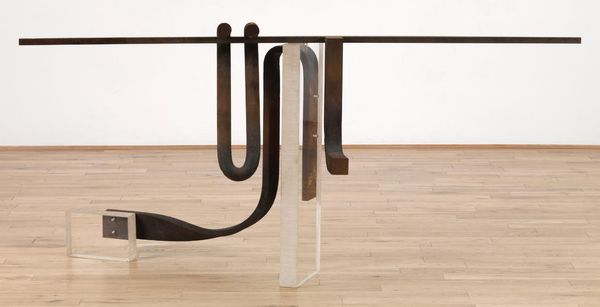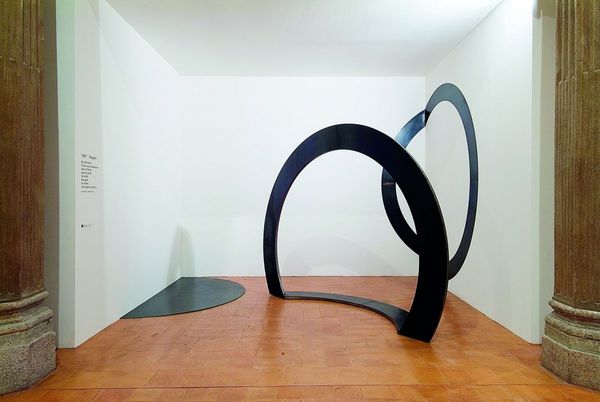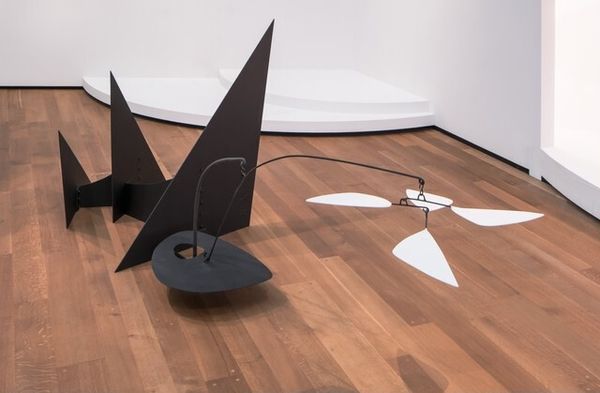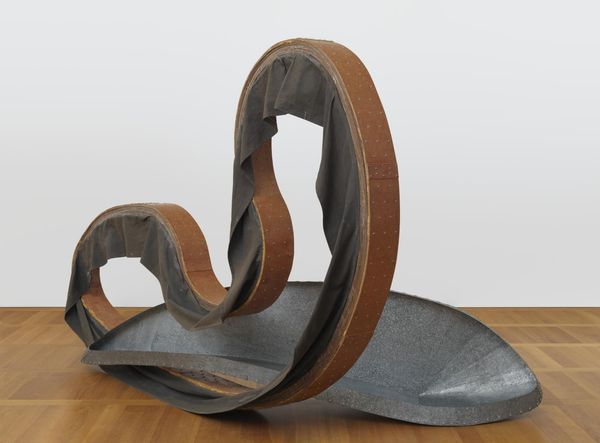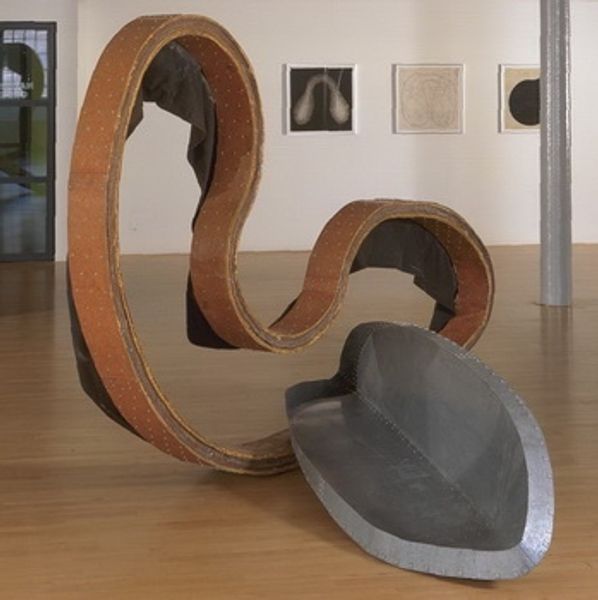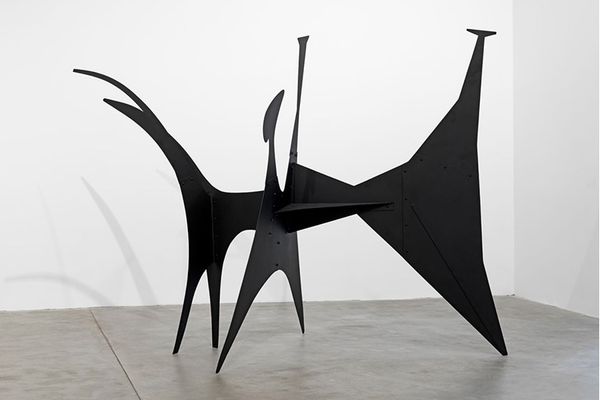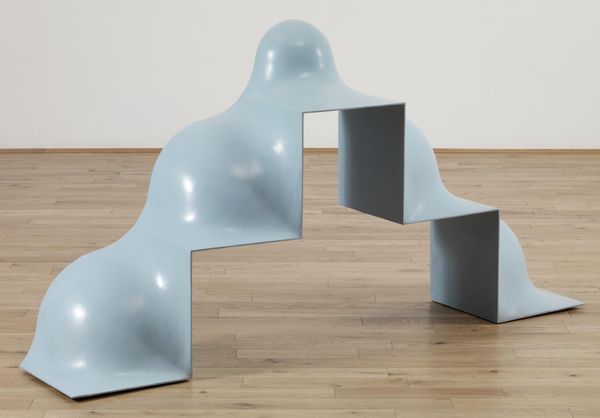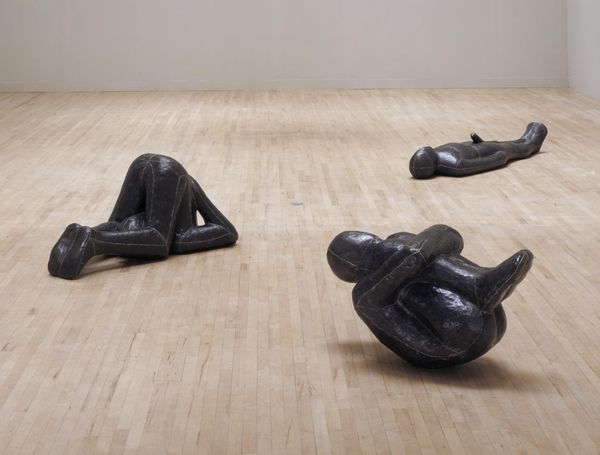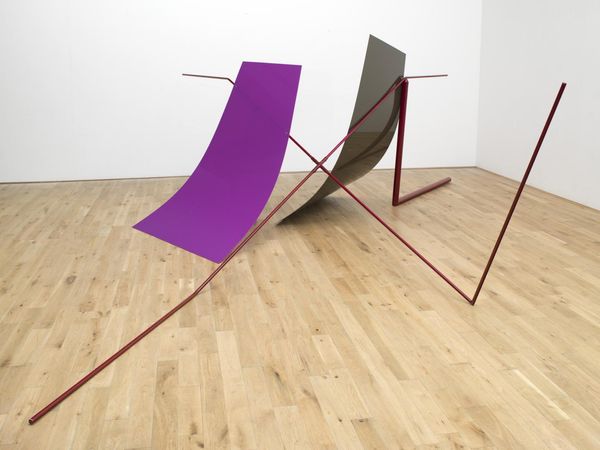
Dimensions: displayed: 970 x 1870 x 2520 mm, 335 kg
Copyright: © The estate of Anthony Caro/Barford Sculptures Ltd | CC-BY-NC-ND 4.0 DEED, Photo: Tate
Editor: This is Sir Anthony Caro’s "Déjeuner sur l’herbe II" from the Tate collection. It’s a steel sculpture that feels both playful and grounded. What kind of visual symbols do you see at work here? Curator: The title points us to Manet's painting, suggesting a reinterpretation of leisure. Steel, though, replaces the soft forms of figures and fabric. Consider how the material itself changes the cultural memory of such a scene. What feelings does it invoke? Editor: It feels like a commentary on industrialization maybe? Less carefree and more... constructed. Curator: Precisely. The weighty steel and angular forms speak to a modern, perhaps more critical, understanding of our relationship with nature and leisure. The symbolism is transformed by the medium. Editor: That’s a really interesting point about how the material shapes the message. Curator: Indeed, the artwork's enduring power comes from its ability to reflect on cultural memory and the changing meanings of symbols.
Comments
tate 8 months ago
⋮
http://www.tate.org.uk/art/artworks/caro-dejeuner-sur-lherbe-ii-t07588
Join the conversation
Join millions of artists and users on Artera today and experience the ultimate creative platform.
tate 8 months ago
⋮
Anthony Caro began making table sculptures in 1966. This development, which can be seen as a discrete thread within his oeuvre, commenced an area of activity within his broader output of sculptures placed directly on the floor or ground. By definition these works are modest in scale in comparison with his larger abstract sculptures and their generic title alludes to this essential quality of reduced size, the works being conceived for a surface whose scale relates to that of a table. From the outset the table sculptures were conceived as works in their own right, rather than as maquettes (preparatory or smaller versions of large sculptures) and were intended to deal with issues and to deploy qualities unique to their scale.
